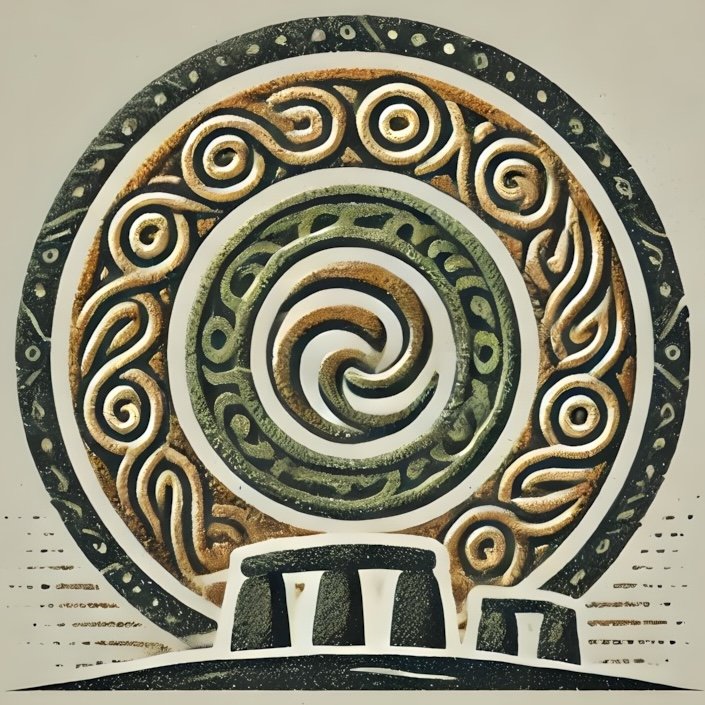Nestled in the lush, rolling landscapes of Ireland, megalithic tombs stand as silent sentinels of a bygone era, whispering tales of ancient peoples, their beliefs, and their rituals. Constructed between approximately 4000 and 2500 BCE, these monumental structures are among the most significant remnants of prehistoric Ireland, showcasing the ingenuity and sophistication of Neolithic societies. The term “megalith” derives from the Greek words “mega,” meaning large, and “lithos,” meaning stone, aptly describing the massive stones used in their construction. These tombs served not only as burial sites but also as focal points for communal activities, reflecting the complex social and spiritual lives of their builders.
Visitors to Ireland today can explore these awe-inspiring sites, each imbued with a sense of mystery and connection to the past. From the intricate carvings that adorn their stones to the alignment of their passages with celestial events, megalithic tombs offer a fascinating glimpse into the beliefs and practices of ancient Irish communities.
Types of Megalithic Tombs
Megalithic tombs in Ireland can be broadly categorized into three primary types: passage graves, court cairns, and portal tombs. Each type exhibits unique architectural features and reflects distinct cultural practices.
Passage Graves
Among the most renowned of the megalithic tombs are the passage graves, with Newgrange being the most iconic example. Located in County Meath, Newgrange is part of the Brú na Bóinne UNESCO World Heritage Site and dates back to around 3200 BCE, making it older than Stonehenge and the Great Pyramids of Giza.
Passage graves typically consist of a long passage leading to a central chamber, which is often surrounded by a circular mound of earth and stones. The passage is usually oriented to capture the first rays of the winter solstice sunrise, suggesting a profound connection between the tombs and astronomical events. Inside, the chambers often contain human remains, along with grave goods that provide insight into the rituals and beliefs of the time.
The intricate carvings found at Newgrange, including spirals, zigzags, and other geometric shapes, hint at a rich symbolic language that remains largely undeciphered. These motifs are not only decorative but may also hold spiritual significance, representing concepts such as life, death, and the cyclical nature of existence.
Court Cairns
Court cairns represent another fascinating category of megalithic tombs, characterized by their distinctive layout. Typically, these structures feature a circular or oval-shaped forecourt leading to a burial chamber. The forecourt is often defined by a series of upright stones, while the chamber itself is usually covered by a cairn of stones.
One of the best-preserved examples of a court cairn can be found at the site of Carnbane East in County Down. Here, visitors can explore the remains of a complex that includes multiple burial chambers and a well-defined forecourt. The design of court cairns suggests that they may have served as communal gathering places, where rituals and ceremonies were conducted, reinforcing social ties among the living and honoring the dead.
Portal Tombs
Portal tombs, also known as dolmens, are perhaps the most visually striking of the megalithic tombs. These structures typically consist of a large capstone supported by two or more upright stones, creating a chamber that is often open to the elements. The simplicity of their design belies their historical significance, as they served as burial sites for the elite members of Neolithic society.
One of the most famous portal tombs is Poulnabrone Dolmen in County Clare, a striking example that has stood for over 5,000 years. Visitors to Poulnabrone can marvel at the impressive capstone that rests precariously atop its supporting stones, evoking a sense of wonder about the people who constructed it and the rituals that took place within. The remains of over 30 individuals have been discovered at this site, along with artifacts such as pottery and tools, providing valuable insights into the lives of the people who once inhabited the region.
Cultural and Mythological Connections
The megalithic tombs of Ireland are deeply intertwined with the country’s rich tapestry of mythology and folklore. Many of these structures are believed to be linked to ancient deities, heroes, and legends, further enriching their historical significance. For instance, the passage grave at Loughcrew is associated with the myth of the goddess Ériu, while the tombs at Carrowkeel are linked to the tale of the warrior Cú Chulainn.
These connections between the tombs and mythology serve to reinforce the idea that the ancient Irish people viewed their landscape as a sacred space, imbued with spiritual meaning. The alignment of certain tombs with celestial events, such as solstices and equinoxes, suggests that the builders possessed a sophisticated understanding of astronomy, which they integrated into their cultural narratives.
Archaeological Discoveries and Research
The study of megalithic tombs has been an ongoing endeavor for archaeologists and historians, yielding a wealth of information about Ireland’s prehistoric past. Excavations at sites like Newgrange and Poulnabrone have uncovered not only human remains but also a variety of grave goods, including pottery, tools, and jewelry. These artifacts provide invaluable insights into the daily lives, social structures, and belief systems of the people who constructed these monumental structures.
Recent advances in technology, such as ground-penetrating radar and 3D modeling, have allowed researchers to explore these sites in new ways, revealing hidden chambers and previously undetected features. As our understanding of these ancient tombs continues to evolve, they remain a focal point for ongoing research, drawing scholars and enthusiasts alike to the mysteries of Ireland’s prehistory.
Visiting the Megalithic Tombs
For those eager to connect with Ireland’s ancient past, visiting these megalithic tombs offers a unique opportunity to walk in the footsteps of the builders. Each site is steeped in history, inviting exploration and contemplation. Many of these locations are easily accessible, with visitor centers providing context and information about the significance of the structures.
As you traverse the Irish landscape, keep an eye out for the subtle signs of these ancient monuments—whether it’s the imposing silhouette of a portal tomb against a sunset or the intricate carvings adorning a passage grave. Each visit promises a journey through time, revealing the enduring legacy of the builders of megaliths and their profound connection to the land and its mythology.

